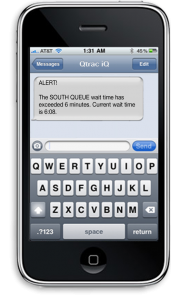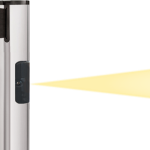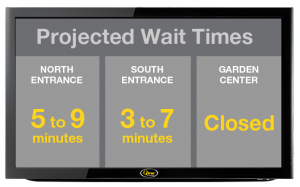In today’s increasingly competitive business environment, it is imperative that businesses evaluate their organizations for ways to better anticipate customer needs, improve processes, and increase efficiency. Technology has been embraced across many areas of business management, operations, and marketing to meet these imperatives. As pressures continue to mount, attention on key areas of the customer experience beg for more attention. Consider these statistics:
- Rockefeller Corporation found that 68 percent of customers leave a business because they think it doesn’t care about them.
- Businesses in the United States lose an estimated $83 billion in sales every year because of poor customer experiences, according to a Genesys study.
- According to Bain and Co., a 5 percent increase in customer retention can increase profitability by 75 percent.
Queues (e.g. waiting lines and checkout lines) can have a major impact on customer satisfaction and therefore a significant impact on business outcomes. As queue management comes into focus, there is a desire for greater visibility and more accurate measurements about how long customers are waiting, the efficiency of customer flow in the queue, and other factors that affect productivity and profitability. Of course, the most efficient way to gain this visibility is through the use of technology. Here’s the appeal:
1. Queue management technologies can provide valuable insights to managers, staff, and customers.

Managers can be notified immediately via text or email when a queue is out of compliance so that they can quickly redirect traffic or dispatch staff members to open more queues. Service agents can more efficiently hail customers with queue management technologies, while customers can enjoy the benefit of queues equipped with digital displays to inform them of their wait and provide entertainment to reduce their perceived wait time.
2. Technology can eliminate the physical act of people counting or the manual process of walking the floor to assess service point utilization.

The use of people-counting technology is a far more precise method of quantifying customer flow than attempting to visually gauge how well a queue is performing. Queue management technology makes it possible to measure queue length, wait times, arrival and service rates, and more all in real-time.
3. Queue management technology can help predict future average wait times and service needs.
By examining historical patterns of their queues as well as current trends, businesses can identify the busiest and slowest times of day, week, month, or year. With this data, managers can be proactive about queuing and service needs and adjust resources as needed.

4. The use of technology can reduce errors and help businesses be more consistent in their delivery of a positive customer experience.
Queue management technology allows a business to accurately see where the inefficiencies are in their queues and to address these issues on a continual basis to ensure a consistently positive experience. The benefits of queue management technology can extend throughout the business—from improving customer satisfaction to improving business productivity. How will you use queue management technology to meet your goals?













